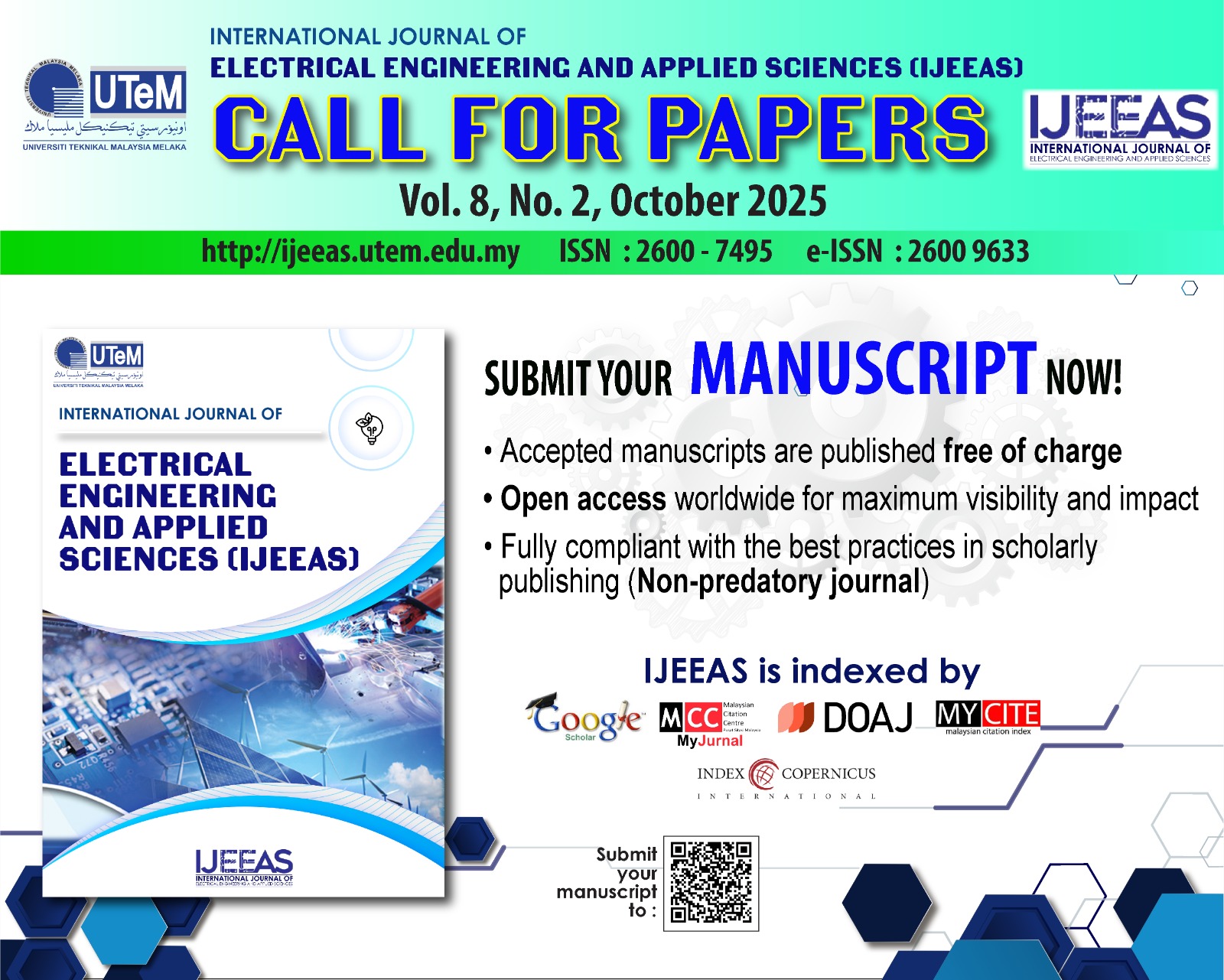Solar Powered Automated Fertigation System (I-SIRAM)
DOI:
https://doi.org/10.54554/ijeeas.2023.6.01.002Abstract
The use of digital agriculture, sometimes known as smart farming or e-agriculture is the new frontier to empower the agriculture sector by infusing IR4.0 in agriculture. The emergence of IoT technology has contributed to the progress of intelligent farming from manual and conventional farming through trial and error to precision agriculture through digital technology. Therefore, I-SIRAM has been created as a digital solution for precise and intelligent agriculture as a result. I-SIRAM is an Internet of Things (IoT)-based automated fertigation system that employs solar power to regulate the injection of fertilizer intake control and monitoring using mobile apps with the goal of preventing fertilizer and water overuse. I-SIRAM is a system designed to mechanically agitate fertilizer in the right quantity, water plants, and apply solar-powered automatic fertilizer to solve electricity accessibility difficulties. Pumps, motors, and sensors are utilised to start the agitation of fertilizer A, fertilizer B, and water into the mixer tank as the system is programmed using the Arduino UNO microcontroller. After several experiments conducted, I-SIRAM was found to be an efficient manner of isolating and blending the fertilizer mixtures in assisting users to optimize the amount of nutrients, water and also considering the pH and EC values are in the range for the farm operation.
Downloads
Downloads
Published
How to Cite
Issue
Section
License
Authors who publish with this journal agree to the following terms:
- Authors retain copyright and grant the journal right of first publication with the work simultaneously licensed under a Creative Commons Attribution License that allows others to share the work with an acknowledgement of the work's authorship and initial publication in this journal.
- Authors are able to enter into separate, additional contractual arrangements for the non-exclusive distribution of the journal's published version of the work (e.g., post it to an institutional repository or publish it in a book), with an acknowledgement of its initial publication in this journal.
- Authors are permitted and encouraged to post their work online (e.g., in institutional repositories or on their website) prior to and during the submission process, as it can lead to productive exchanges, as well as earlier and greater citation of published work (See The Effect of Open Access).







